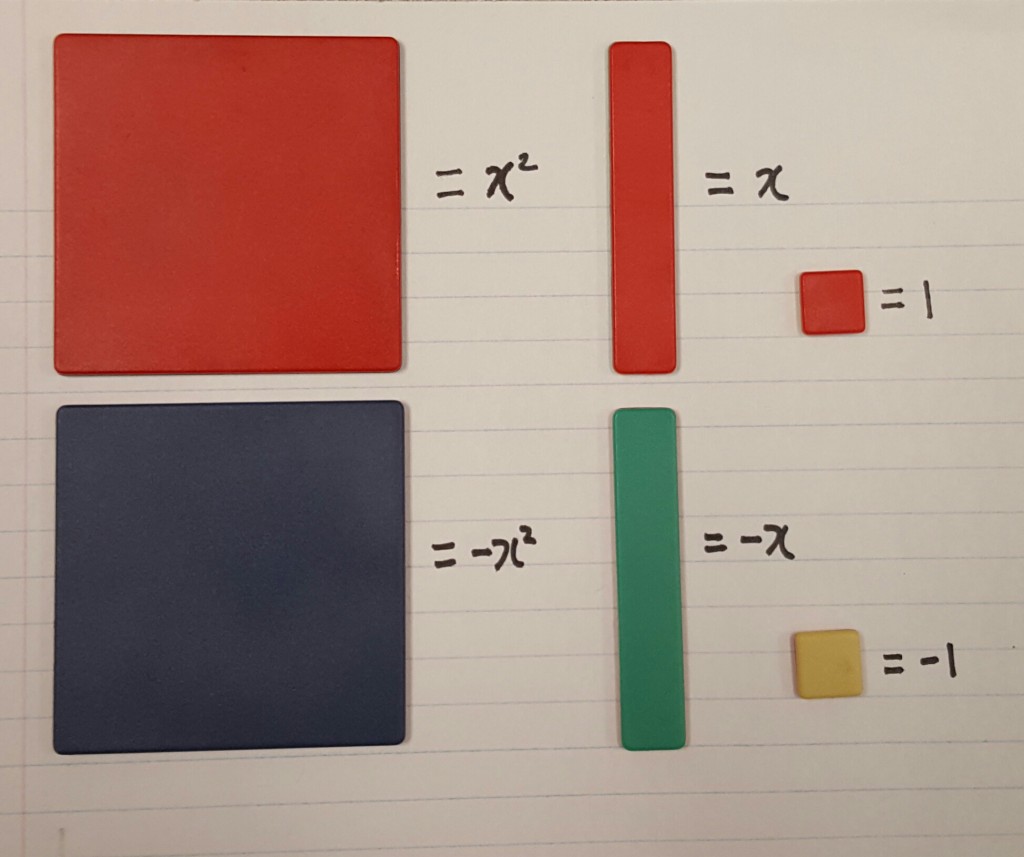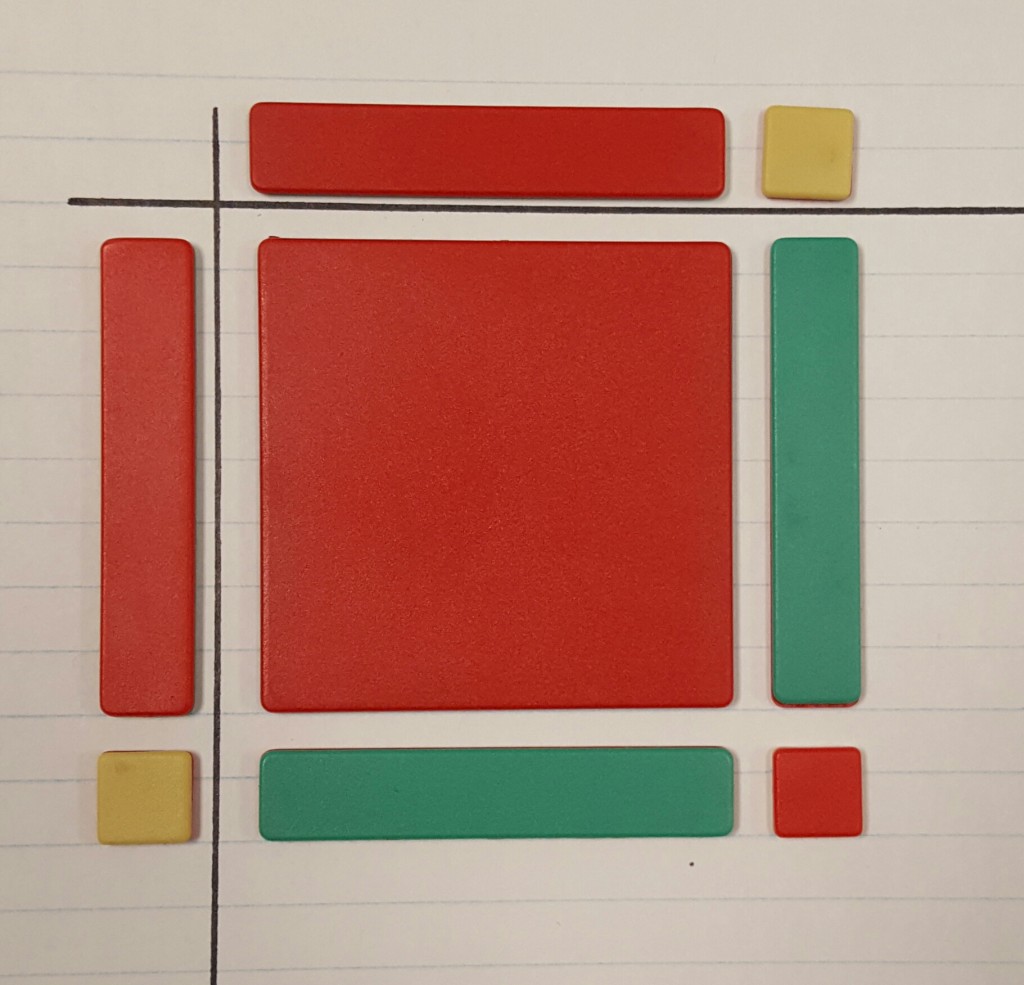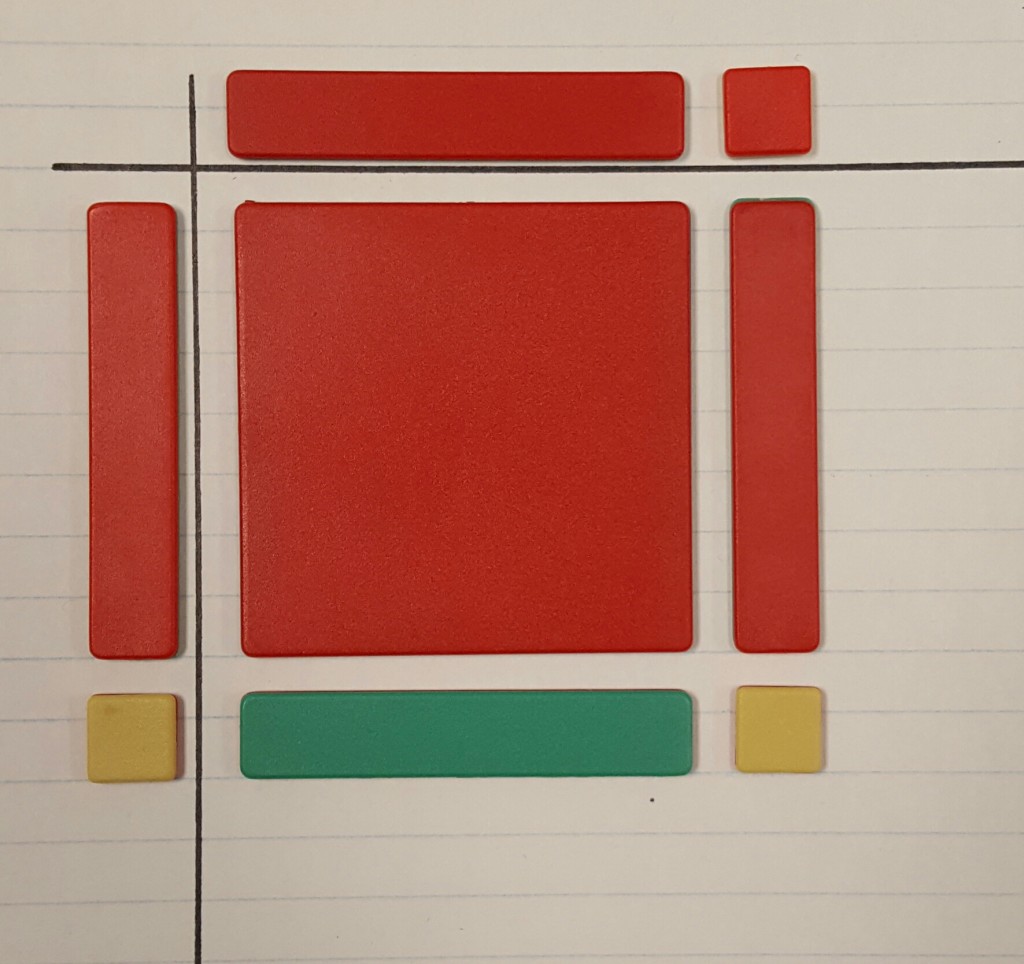Before using the algebra tiles to model the mathematical expressions, I chose each colours of the tiles to represent what it meant.
Key :
=
=
=
I expanded the expression in to
, because this makes it easier to understand why the algebra tiles are labled like that. There are one red stick and one red small square on each of the two sides. In the middle, there are red large square, two red stick, and 1 red small square.
=
=
=
This equation is similar to the prior. The only difference is that this equation has a -1.
To solve this equation, I expaned in to
.
=
=
I put a red stick and a red small square on the top side, and a red stick and a yellow small square on the left side. Then, I could know which alegebra tiles had to go in to the middle. A red big square, two sticks that are different colours, and one yellow small square.
=
=
=
=
=
I couldn’t model this expression because it was cubed, so I had to solve it by doing two steps. First, I wrote it down like this, . I multiplyied the two binomials together, and that gave me
. Then, I multiplied the trinomial and
. Finally, I simplified the expression, and the simplified expression was
.



